Break-In Hindsight: Exploring People's Reactions to Home Burglaries
Link Copied

In 2017, there were an estimated 1.4 million burglaries according to the FBI, and more than 2 in 3 break-ins occurred on residential properties. While the average damage is more than $2,400, the total impact of these crimes can go much deeper for the families who experience them.
People who endure a home invasion can find living with the incident stressful and traumatic. They may have trouble sleeping at night, difficulty functioning in their day to day, and according to some studies, may never feel totally comfortable in their home again.
For a more intimate look at home invasions, we surveyed over 990 people who experienced a break-in at least once. From installing security systems to bringing home a new dog, we wanted to know how people coped with life after a burglary. Read on as we explore how break-ins occur and their impact on victims.
Anatomy of a Home Invasion
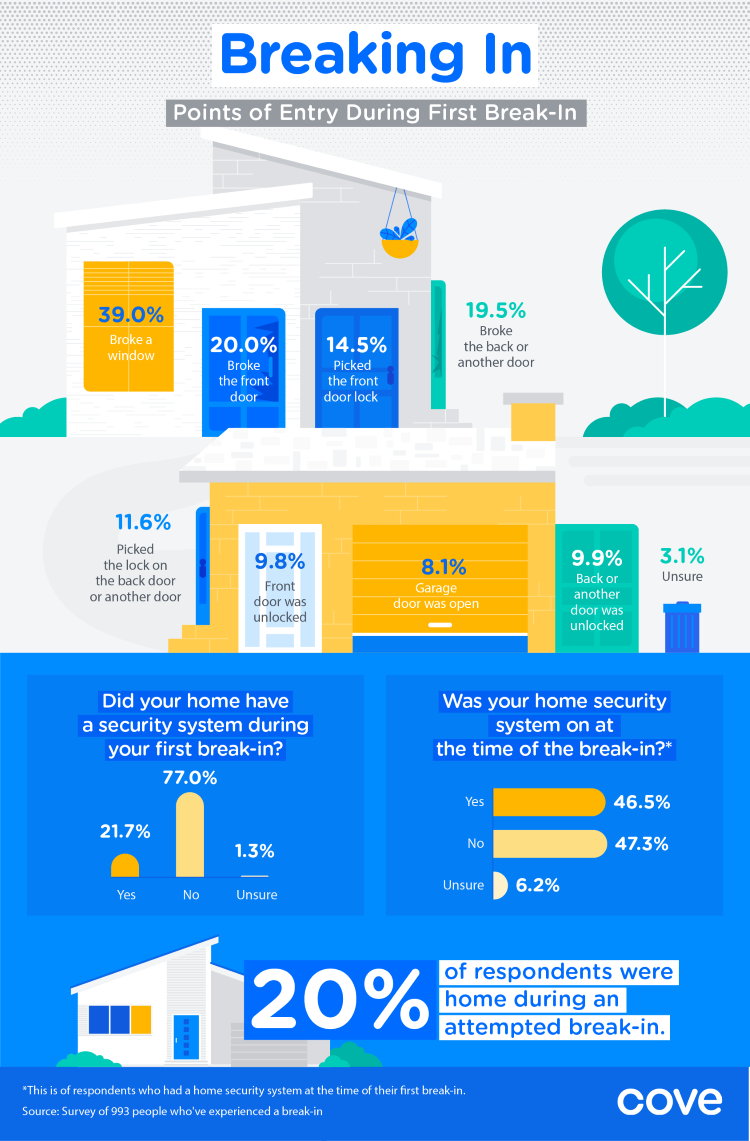
These invasions aren’t always random. Analysis shows many break-ins are committed by someone who lives within two miles of the infiltrated property, meaning they can learn your habits and routine before attacking.
Thirty-nine percent of people who were victims of a break-in acknowledged the point of entry was a broken window which is why you need to have window sensors, followed by 1 in 5 who said the burglar broke the front foot. Overwhelmingly, 77% of burglary victims admitted to not having a home security system at the time of their first break-in, and of the nearly 22% of people who did have a home security system, almost 47% said it wasn’t on at the time of the burglary.
Research conducted with convicted home invaders shows burglars typically avoid breaking into homes they consider more complicated and often flee when they hear an alarm go off. Similarly, while an active alarm system is likely to deter a break-in, so are big dogs that might be considered aggressive or likely to defend the home
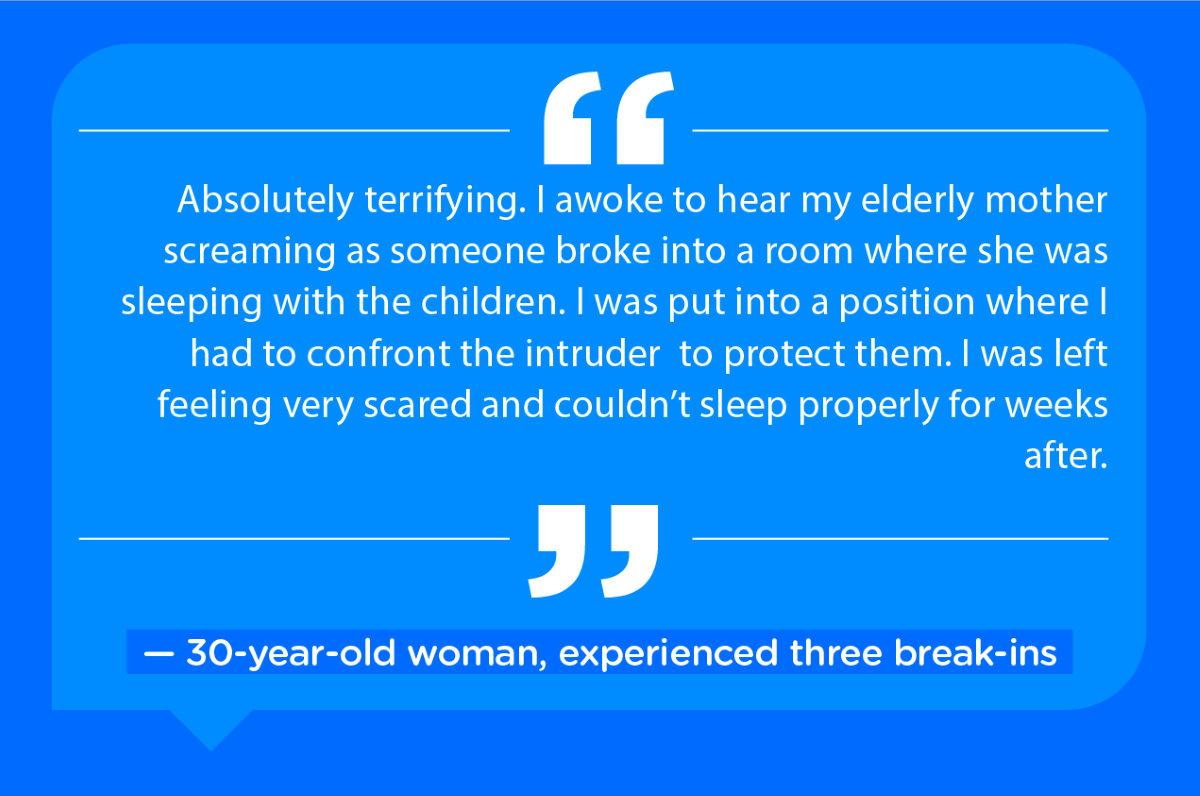
Counting the Cost
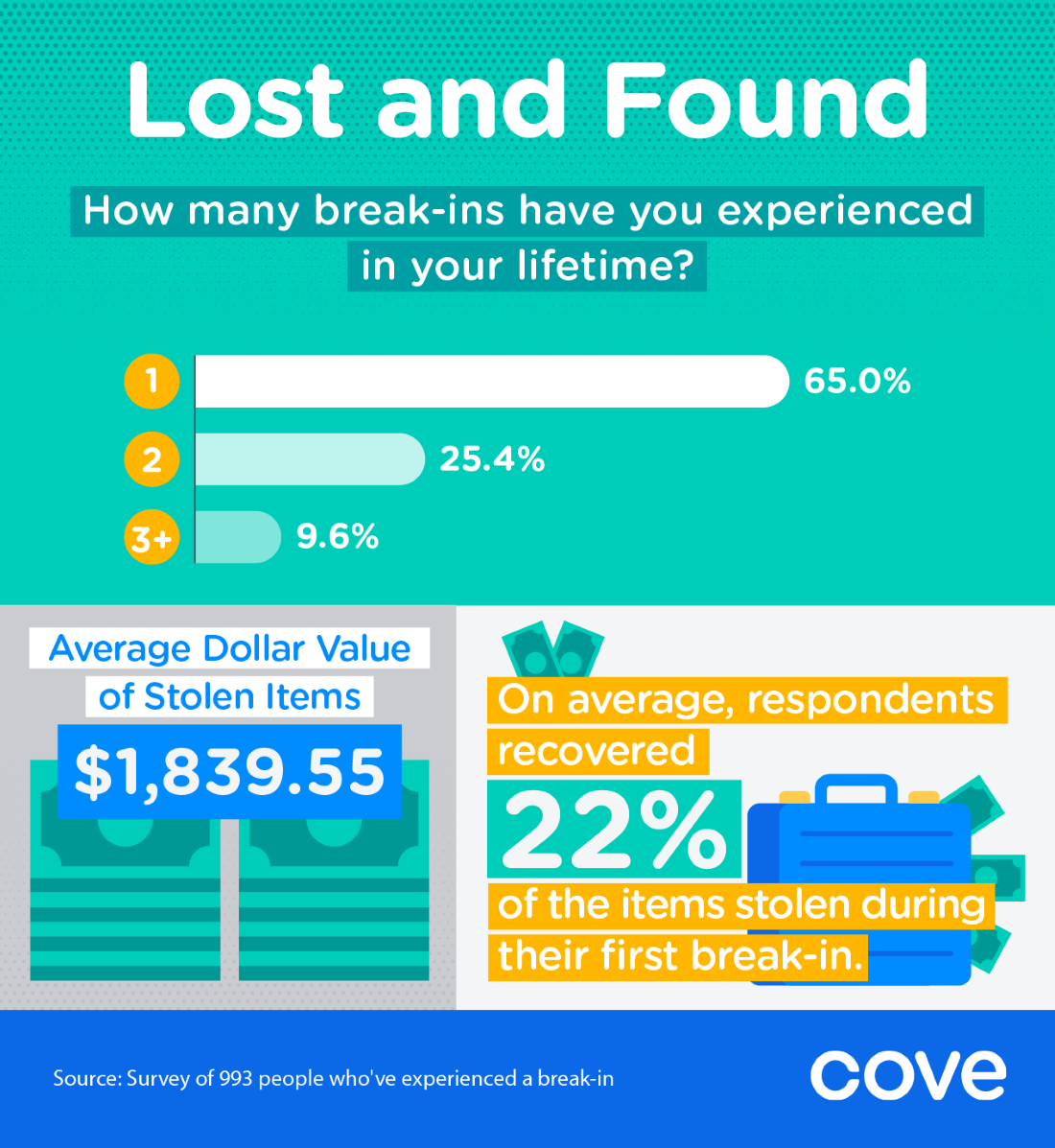
What Was Their Experience?
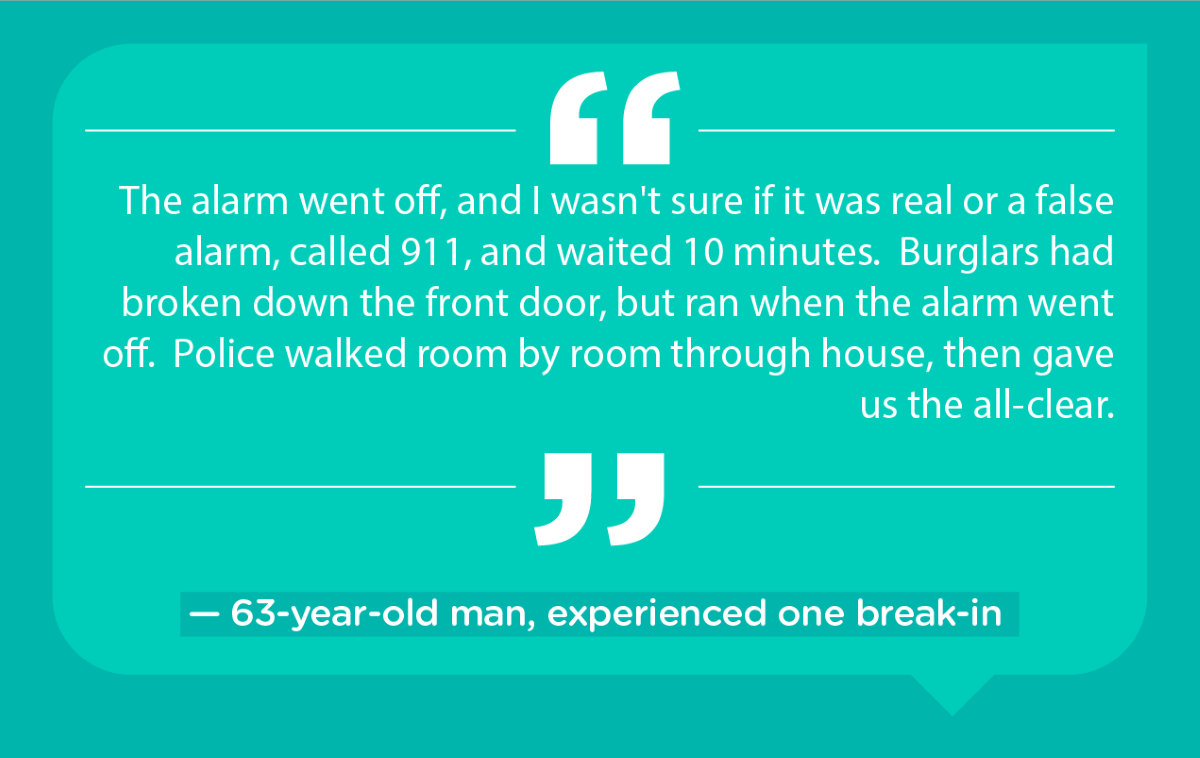
The likelihood of a repeat burglary may be higher than you expect. Once a burglar knows the layout of your home, where certain items or possessions are kept, and that you don’t have a home security system, they may be more enticed to come back. Studies suggest the highest risk of a repeat burglary is of the initial break-in.
Sixty-five percent of break-in victims were only broken into once at the time of our survey. Another 1 in 4 were burglarized twice, and nearly 1 in 10 experienced a break-in three or more times.
Home Security Regrets
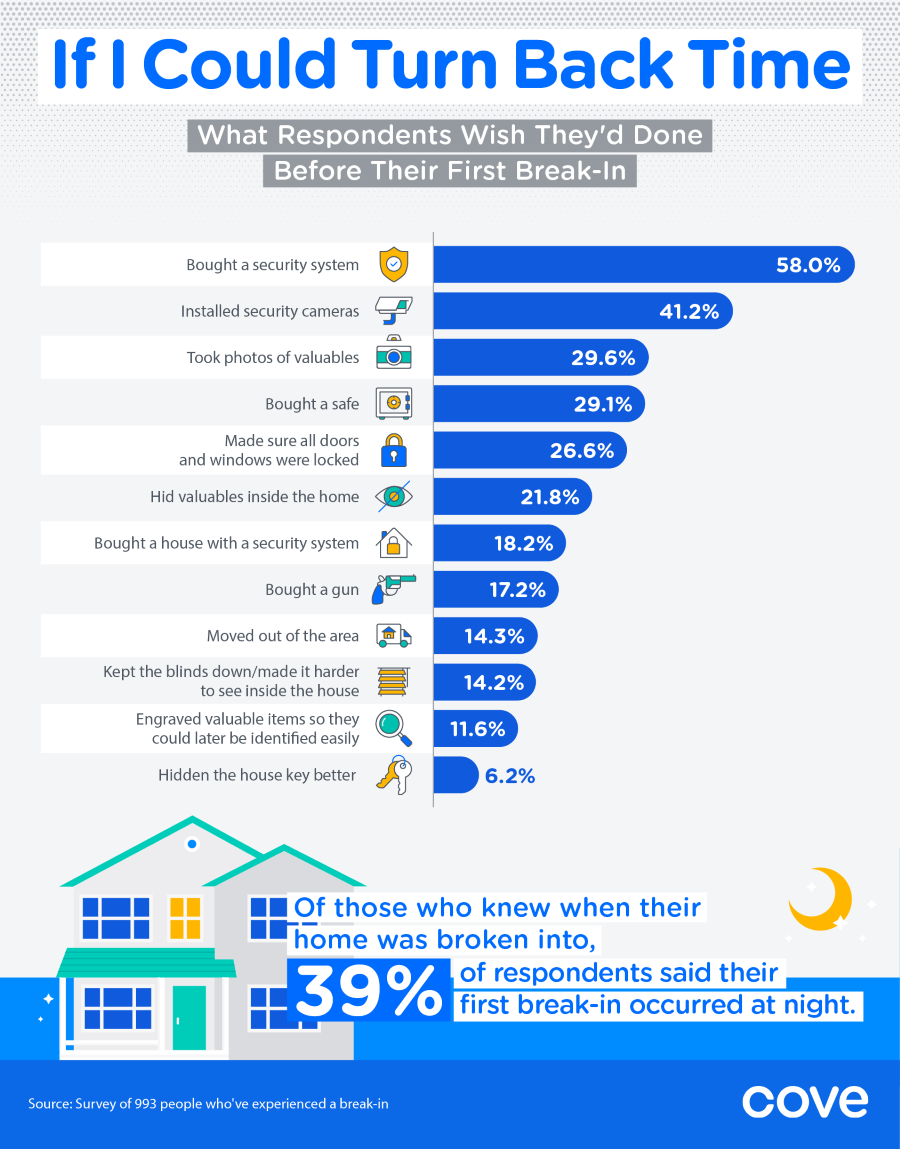
Putting an alarm sign in your yard might deter some criminals – but experts say the sign alone isn’t sufficient to convince a burglar to pick a different property. Instead, the best defense is an active home security system. If you really want to compel criminals to avoid your home, you need an alarm system that will alert you and them of unwanted activity.
We found that more than half of people who were victims of a break-in wished they’d purchased a home security system before the incident. Another 41% regretted not installing security cameras, 222 and more than 1 in 4 wished they’d been more diligent in making sure all of their doors and windows were properly secured.
An Emotional Response
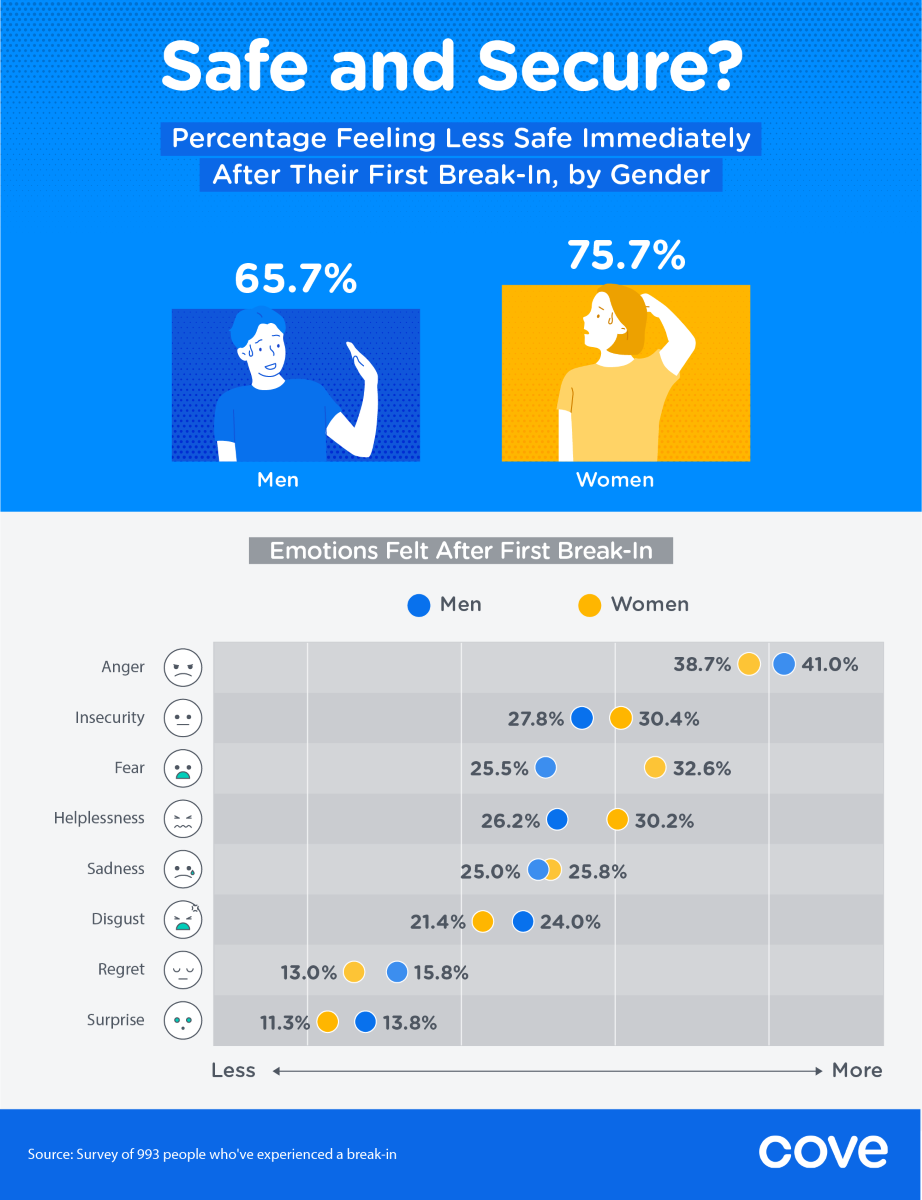
Lasting Effects

A major scare of any kind can trigger traumatic stress, and if your home has been broken into, feeling safe again might be a tall order. Even if you aren’t home during the incident, or don’t come into personal contact with the intruder, it’s still possible to experience a strong emotional reaction.
We found nearly 76% of women and 66% of men felt less safe in their home immediately after a break-in. Men were more likely to have feelings of anger and disgust, while women more commonly felt insecure, afraid, or helpless.
Responding to a Break-In
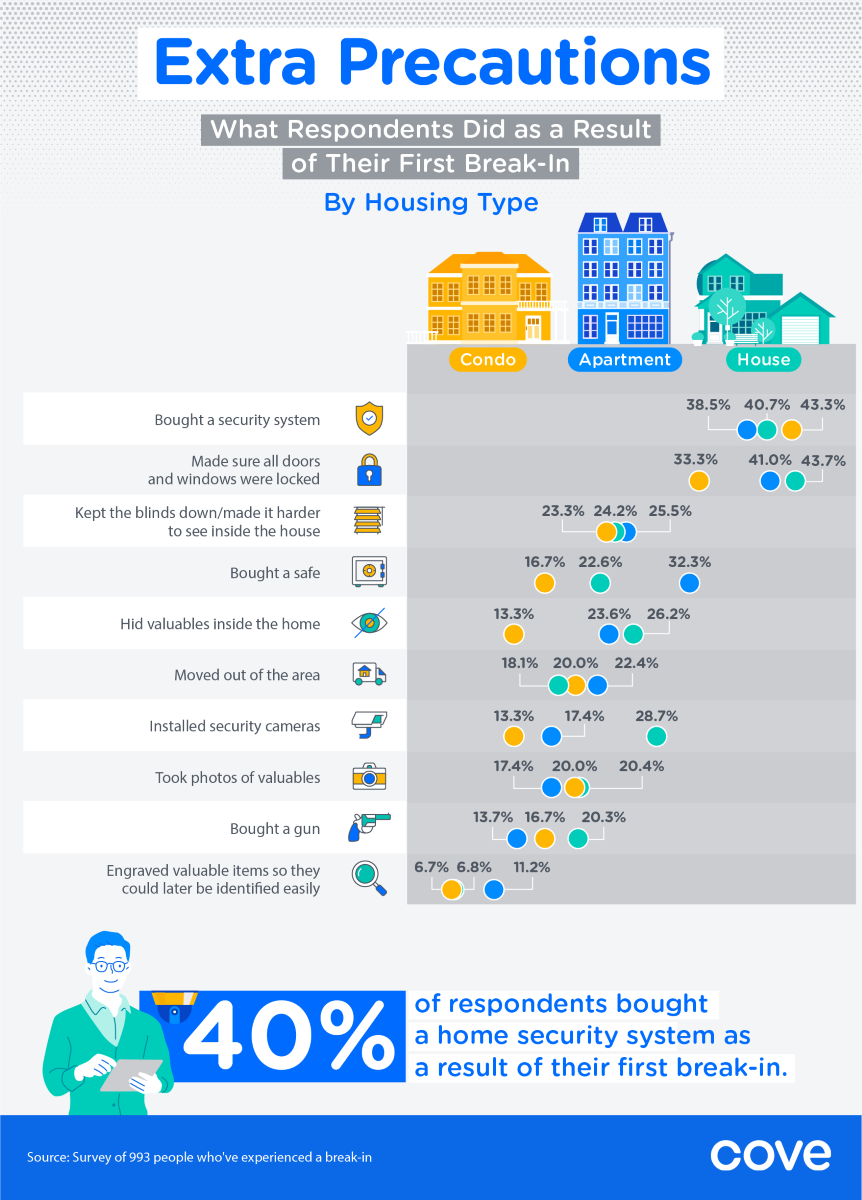
Forty percent of people purchased a home security system after a break-in. Home security systems were more common among people living in condos (43%) than those living in houses (nearly 41%) or apartments (almost 39%).
Homeowners, however, were more likely than others to ensure their doors and windows were sufficiently locked (44%), to hide their valuables (26%), install security cameras (29%), and buy a gun (20%).
Apartment owners may not be allowed to make certain changes depending on the specifics of their lease agreements, but those surveyed still made efforts to improve their safety after a break-in. Thirty-two percent of renters bought a safe after their first break-in and were more likely to move out of the area (22%) and engrave their valuables (11%) than those who lived in a house or condo.
Multipurpose Pets
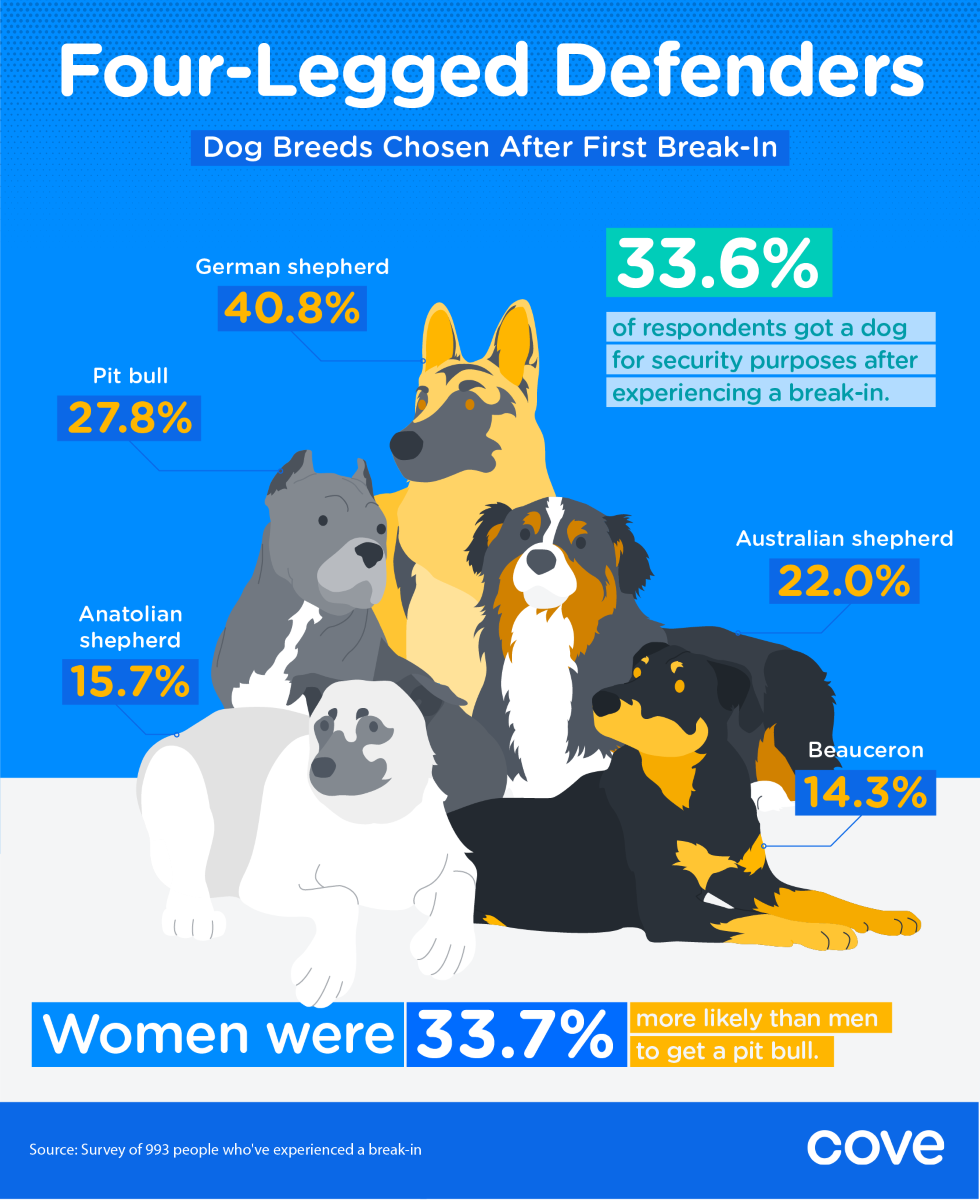
Sure, a pet comes with plenty of responsibilities, and many pets require a time commitment. However, research shows pet owners get sick less often, tend to have better heart health, get more exercise, and are typically happier.
And as our survey found, nearly 34% of people got a pet for security purposes after having their home burglarized.
The most popular dog breeds for security were German shepherds (almost 41%), pit bulls (28%), and Australian shepherds (22%). Despite the stigma often associated with pit bulls and similar breeds, women were almost 34% more likely than men to get a pit bull.
Insider Perspective
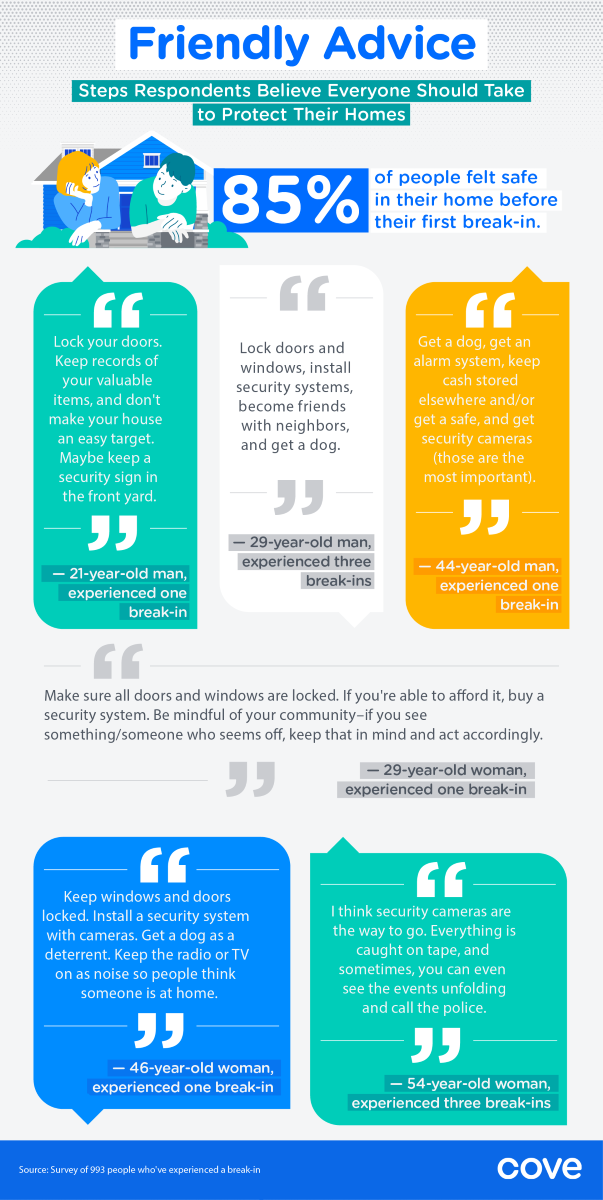
It’s hard to imagine how you will feel after a break-in until it actually occurs. We asked survey respondents for their best advice on protecting your property and preventing the trauma of a break-in.
As you can see from their responses, the most common advice typically involved double-checking all of the doors and locks, including on the windows. Many also recommended getting a dog or a home security system to deter criminals.
Creating a Safe Environment
Home is supposed to be where the heart is – a place you can retreat to at the end of the day. Perhaps even more importantly, it’s supposed to make you feel safe from the moment you walk through the door. So it’s not uncommon to experience fear, helplessness, anger, and frustration when a break-in happens. While many people who experienced a break-in said they wished they’d been more involved in their home’s security, many failed to provide even the most basic level of protection: a home security system.
At Cove, we’re committed to security with no contracts, low costs, and professional-grade technology at DIY prices. With 24/7 professional monitoring and easy-to-use equipment, our lifetime warranty means you’ll have peace of mind when and where you need it. Protect your family and the things that matter most with Covesecurity. Visit us to learn more and secure your home today.
Sources
https://ucr.fbi.gov/crime-in-the-u.s/2017/crime-in-the-u.s.-2017/topic-pages/burglary https://www.forbes.com/sites/nealegodfrey/2016/04/10/the-costs-of-home-burglary/#798cb6406d73 https://www.mirror.co.uk/news/uk-news/most-burglary-victims-never-feel-5041797 https://www.safewise.com/blog/8-surprising-home-burglary-statistics/ https://www.ktvb.com/article/news/crime/we-asked-86-burglars-how-they-broke-into-homes/277-344333696 https://www.huffpost.com/entry/intruder-sleep_n_59554020e4b0da2c73221335 https://www.oxygen.com/blogs/5-ways-to-protect-your-apartment-from-robbery
Methodology and Limitations
To get the data presented in the above study, a survey was run using Amazon’s Mechanical Turk service. There were 993 respondents in total: 508 were men, 482 were women, and three identified as neither. 126 were baby boomers, 263 were from Generation X, 578 were millennials, and 26 were from generations outside those.
To qualify for this survey, respondents had to have experienced at least one break-in in either their childhood home or their current home. All data presented above rely on self-reporting, and there can be issues with self-reported data such as telescoping and exaggeration. To combat these issues, respondents had to answer an attention check to ensure they didn’t respond randomly. Respondents could select multiple options when asked about the point of entry for their first break-in, which is why the numbers for that section do not add up to 100%.
Fair Use Statement
Want to help protect your readers from the emotional trauma of a break-in? Help share our respondents’ advice and recommendations for any noncommercial use. Just don’t forget to include a link back to this page so that they can see our complete findings and survey results.
Ready to get started?
Take this short quiz to build your customized system today!
Takes less than a minute


